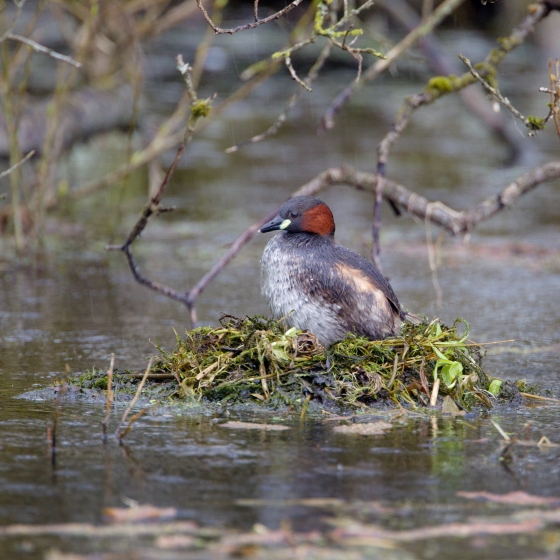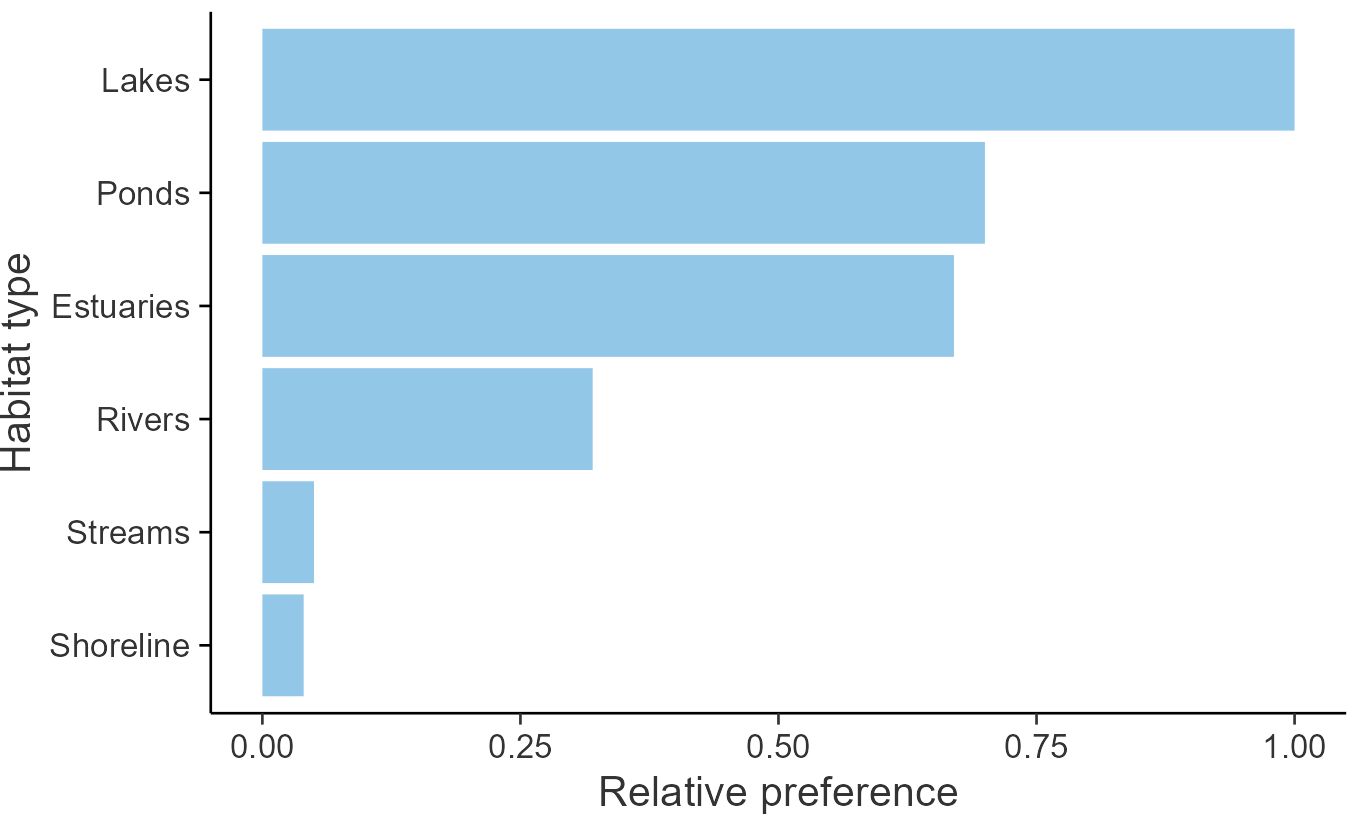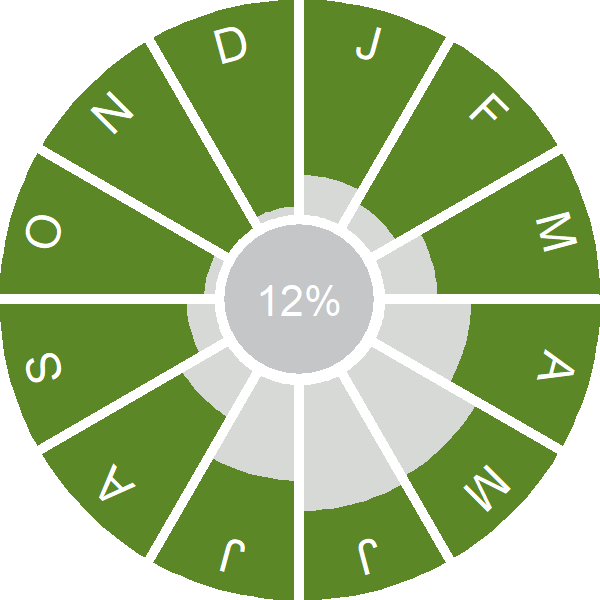Little Grebe

Introduction
The smallest of our grebes, the Little Grebe occupies a broader range of waterbodies than its relatives, even being found breeding on small ponds on farmland or in urban parks.
Found across lowland Britain & Ireland, breeding Little Grebes may be overlooked because of their shy nature, often remaining hidden in emergent vegetation. Despite this they can be rather vocal, advertising their presence through a series of high-pitched calls.
During the winter months Little Grebes also occupy rivers, streams, and some brackish and coastal habitats. Our understanding of Little Grebe movements is far from complete; as well as the small distance movements of British breeding birds to wintering sites, there is evidence of birds from other populations arriving here in winter.
- Our Trends Explorer gives you the latest insight into how this species' population is changing.

Key Stats
Identification
ID Videos
This section features BTO training videos headlining this species, or featuring it as a potential confusion species.
Winter Grebes
Small Breeding Grebes
Songs and Calls
Call:
Begging call:
Other:
Status and Trends
Conservation Status
Population Change
The possible decline shown by the WBS/WBBS (which is not statistically significant) may reveal problems among birds on linear waterways during the early 1980s and since the late 1990s, but a possible increase in the BBS UK trend (also not significant) suggests that wider populations, including birds on small still waters, have been more healthy. Because of the shortage of data, and the conflict between WBS and BBS assessments, the rapid decline indicated by WBS in the 1980s did not initially trigger a conservation listing. After a period on the amber list through its UK decline during 2009-15, the species is now again on the green list (Eaton et al. 2015). In an analysis of nest record cards, Moss & Moss (1993) found that nests on ponds and lakes were significantly more successful than those on rivers and streams and that nests on rivers, subject to fluctuating water levels, experienced significantly higher failure rates through flooding than those on canals, where water levels are artificially maintained. Winter numbers show sustained shallow increase, apart from a brief period of decline between 2007/08 and 2012/2013 (WeBS: Frost et al. 2020). Numbers have been broadly stable across Europe since 1990 (PECBMS: PECBMS 2020a>).
Distribution
Breeding and winter distributions of Little Grebes are very similar, with birds widespread across most of the low-lying regions of Britain & Ireland, absent from parts of northern Scotland, the Pennines, Wales and southern Ireland, and most abundant along the major river valleys.
Occupied 10-km squares in UK
2007/08–10/11
or view it on Bird Atlas Mapstore.
2008–11
or view it on Bird Atlas Mapstore.
European Distribution Map
Distribution Change
Since the 1981–84 Winter Atlas there has been a notable extension of range throughout Britain & Ireland with a 27% increase in the number of occupied 10-km squares. Winter numbers are poorly monitored by existing schemes because Little Grebes occupy many small wetlands and waterways that are not routinely surveyed.
Change in occupied 10-km squares in the UK
from 1981–84 to 2007–11
or view it on Bird Atlas Mapstore.
from 1968–72 to 2008–11
or view it on Bird Atlas Mapstore.
Seasonality
Little Grebes are present throughout the year, recorded on up to 10% of complete lists, with a dip in detection in late spring.
Weekly pattern of occurrence
The graph shows when the species is present in the UK, with taller bars indicating a higher likelihood of encountering the species in appropriate regions and habitats.

Habitats
Breeding season habitats
Relative frequency by habitat
The graph shows the habitats occupied in the breeding season, with the most utilised habitats shown at the top. Bars of similar size indicate the species is equally likely to be recorded in those habitats.

Movement
Britain & Ireland movement
Foreign locations of birds ringed or recovered in Britain & Ireland
Dots show the foreign destinations of birds ringed in Britain & Ireland, and the origins of birds ringed overseas that were subsequently recaptured, resighted or found dead in Britain & Ireland. Dot colours indicate the time of year that the species was present at the location.
- Winter (Nov-Feb)
- Spring (Mar-Apr)
- Summer (May-Jul)
- Autumn (Aug-Oct)

European movements
EuroBirdPortal uses birdwatcher's records, such as those logged in BirdTrack to map the flows of birds as they arrive and depart Europe. See maps for this species here.
The Eurasian-African Migration Atlas shows movements of individual birds ringed or recovered in Europe. See maps for this species here.
Biology
Productivity and Nesting
Nesting timing
Egg measurements
Clutch Size
Survival and Longevity
Survival is shown as the proportion of birds surviving from one year to the next and is derived from bird ringing data. It can also be used to estimate how long birds typically live.
View number ringed each year in the Online Ringing Report.
Lifespan
Biometrics
Wing length and body weights are from live birds (source).
Wing length
Body weight
Ring Size
Classification, names and codes
Classification and Codes
- Order: Podicipediformes
- Family: Podicipedidae
- Scientific name: Tachybaptus ruficollis
- Authority: Pallas, 1764
- BTO 2-letter code: LG
- BTO 5-letter code: LITGR
- Euring code number: 70
Alternate species names
- Catalan: cabusset comú
- Czech: potápka malá
- Danish: Lille Lappedykker
- Dutch: Dodaars
- Estonian: väikepütt e. punakael-pütt
- Finnish: pikku-uikku
- French: Grèbe castagneux
- Gaelic: Gobhlachan-allt
- German: Zwergtaucher
- Hungarian: kis vöcsök
- Icelandic: Dverggoði
- Irish: Spágaire Tonn
- Italian: Tuffetto
- Latvian: mazais dukuris
- Lithuanian: paprastasis mažasis kragas
- Norwegian: Dvergdykker
- Polish: perkozek (zwyczajny)
- Portuguese: mergulhão-pequeno-castanho
- Slovak: potápka malá
- Slovenian: mali ponirek
- Spanish: Zampullín común
- Swedish: smådopping
- Welsh: Gwyach Fach
- English folkname(s): Didapper
Research
Causes of Change and Solutions
Causes of change
There is little good evidence available regarding the drivers of the breeding population change in this species in the UK.
Further information on causes of change
No further information is available.
Information about conservation actions
The decline of this species contrasts with the increases observed for many other wetland species and, as the reasons for the observed WBBS decline are unknown, so potential conservation actions are also unclear. Theoretically, actions to maintain and create wetland habitats and to provide nesting sites for other wildfowl are also likely to support this species. However, like the Moorhen, this species can be found breeding on smaller patches of suitable habitat in the wider countryside, such as farm ponds; therefore actions to protect and create such habitats should also be considered to benefit the Little Grebe.
More Evidence
More evidence from Conservation Evidence.com
Partners
Citing BirdFacts
If you wish to cite particular content in this page (e.g. a specific value) it is best to use the original sources as linked in the page. For a more general citation of the whole page please use: BTO (20XX) BirdFacts Species: profiles of birds occurring in the United Kingdom. BTO, Thetford (www.bto.org/birdfacts, accessed on xx/xx/xxxx).

